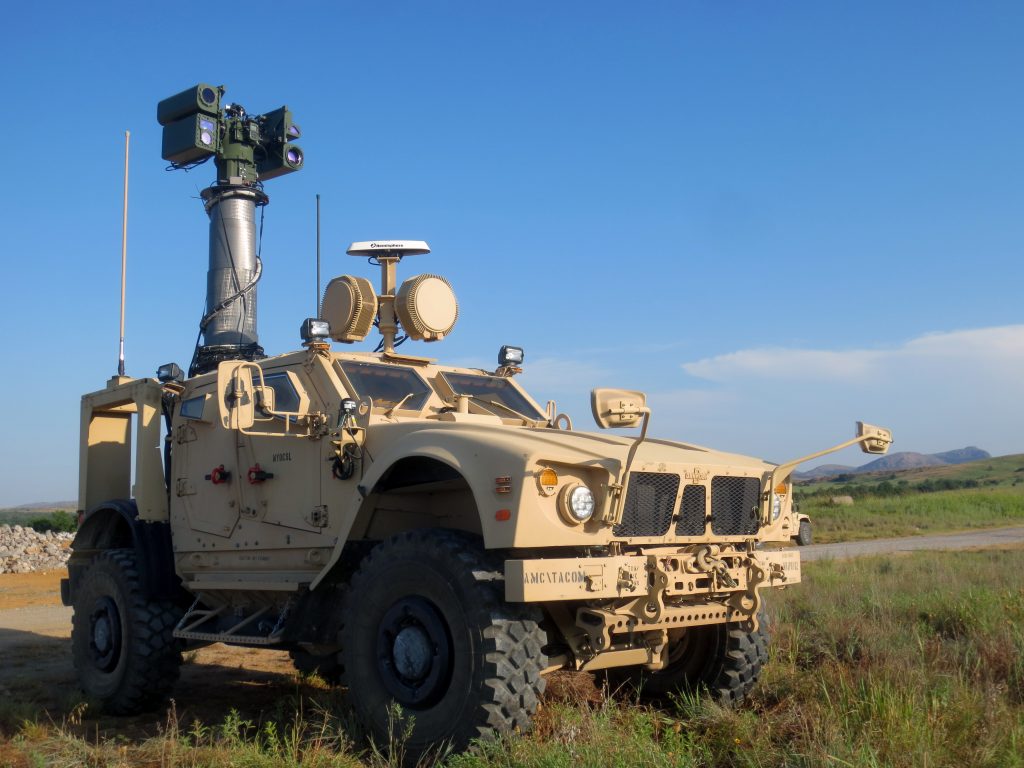
Our agility is just not how we operate as a company, it’s built into our products, to ensure we are supporting our customers any way we can.
Leonardo DRS is known for its advanced tactical radars, small, powerful and flexible on how they can be used across multiple domains. One of our most popular radars used across the services is the Multi-Mission Hemispheric Radar (MHR) tactical system. It’s an important and proven radar technology able to provide real-time 360-degree full spectrum capability and used across the services for a variety of operational missions, including as the primary radar enabling the Army’s Maneuver Short Range Air Defense (M-SHORAD) system.
The MHR is the definition of agile, and when the U.S. Army was looking for a proven radar system that would provide accurate real-time 360-degree full spectrum capability for the service’s Maneuver and Fires Integrated Experiment (MFIX) testing, Leonardo DRS’s team was able to deliver an agile product for this vital event.
MFIX is a series of experimental events that is part of the U.S. Army’s overarching effort to remain at the forefront of technological innovation to maintain superiority over any potential adversary. The two-week event uses various programs of record to test emerging defensive and offensive technology to seek solutions for today’s complex operational environment.
This year’s MFIX featured several new technologies across electronic warfare, advanced fire control systems, directed energy, and defeat systems against intelligent UAS detection.
When it comes to counter-UAS systems, radar plays a key role to track and identify drones of various types, and a dependable radar system is essential for success. In testing, like that being done at MFIX, U.S. Army exercise facilitators rely on a range of radar systems to provide situational awareness as well as determining the accuracy of real-time information of what’s occurring on the battlefield.
A critical tool for exercise facilitators is what they call a “truth data” radar providing a baseline comparison for other radar tracks if there is a question on data accuracy, as well as providing a dependable record for each event. Exercise facilitators at MFIX ensured there is a proven, accurate system in place in which they could rely to collect all the critical details for counter-UAS testing during the exercise.
Throughout testing, the MHR performed continuously, closely collecting baseline data during selected exercises and providing evaluators with detailed and accurate data. It’s success in its role for the exercise proved its reliability again when required to fill testing gaps and provide a cue to kinetic and non-kinetic engagements.
The importance of the MHR in MFIX cannot be understated. Exercise facilitators need dependable data quickly to make decisions on new technologies that can become part of a new generation of systems will change the way our warfighter fight and defend themselves.
Outside of the exercise, the U.S. military and allied forces use these DRS air surveillance radars as their system of choice for current and emerging tactical Integrated air and missile defense systems. The proven performance and the variety of installations and applications give users flexibility where and when it’s needed. The MHR is designed to be agile and used in fixed or deployable/maneuverable positions, on-the-move onboard tactical land vehicles, and aboard littoral combat and patrol ships.
The DRS MHR is a cutting-edge, software-defined radar with an “Active Electronically Scanned Array” for high performance against a range of aerial threats, including mortars, rockets, drones, fighter jets, anti-tank guided missiles, and helicopters.
The radars are deployed on hundreds of battle-platforms and are at the heart of combat-proven vehicle Active Protection Systems, Vehicle Protection Systems, and Hostile Fire Detection applications; used for Counter Rocket, Artillery, and Mortar to detect, track and classify all types of elevated fire during critical missions; and emerging tactical integrated air & missiles, directed energy, jamming, and other threat defeat technologies.
Today air and missile defense are a critical need to ensure strong force protection requirements. At the heart of those capabilities is a tactical and powerful radar system with the flexibility to be used for mobile ground, maritime and stand-alone requirements.
The Leonardo DRS MHR radar has become the system of choice across the U.S. military and allied forces because of its combat-proven performance in defensive tactical maneuvers against hostile fire or hemispheric surveillance.
In difficult and complex multi-domain missions on the battlefield, products like the MHR radar are designed to be agile to help warfighters, whatever the mission, make fast decisions that will save lives.